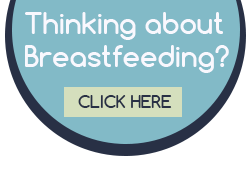How do I know that my baby is getting enough?
Listen to your baby. Your baby will tell you when it’s time to eat and how much they need.
Early signs of hunger are:
- Rooting at chest
- Sucking on his or her tongue, hand or fingers
- Rapid eye movements
- Attempting to position self to feed
Late signs of hunger are:
- Fussing
- Crying
- Moving head frantically from side to side
Tip: If baby is too upset, try placing baby skin-to-skin. This can help baby relax.
Signs of fullness are:
- Turns head away
- Closes mouth
- Stops sucking
- Appears sleepy
- Unlatches self from breast
How Long and How Often Should Baby Feed?
A healthy full-term baby can eat for however long they like. There is no time limit. Time between feeds may vary. There will be days that all the baby wants to do is feed. This is normal. It does not mean that you don’t have enough milk.
Try to allow your baby to finish one breast before offering the other breast. The longer that baby is at one breast, the more energy filled milk baby will get.
Night shifts are a given – especially in the first weeks. Your milk production is highest at night. Take advantage of this! Try to sleep when your baby sleeps. Housework can wait. In those first few weeks, ask for help from family and friends. Rest, recovery, fluids and eating are important!
If you are concerned about your baby’s eating, speak to your healthcare professional or a breastfeeding support person. See our section on When to Get Help
Tip: Try keeping a water bottle and snacks within arm’s reach of where you usually feed your baby.
How big is baby’s tummy?
Babies are born with tiny tummies and don’t need very much in the beginning. As they grow their tummies grow too. As their tummies get bigger, they will have a period of feeding more often at the breast telling your milk production to increase too!
See our Breastfeeding Tracker sheet: Breastfeeding Tracker_FMM
See HealthyParents HealthyChildren website for more information












